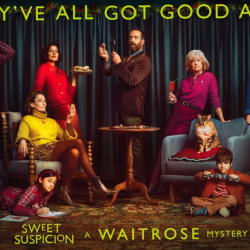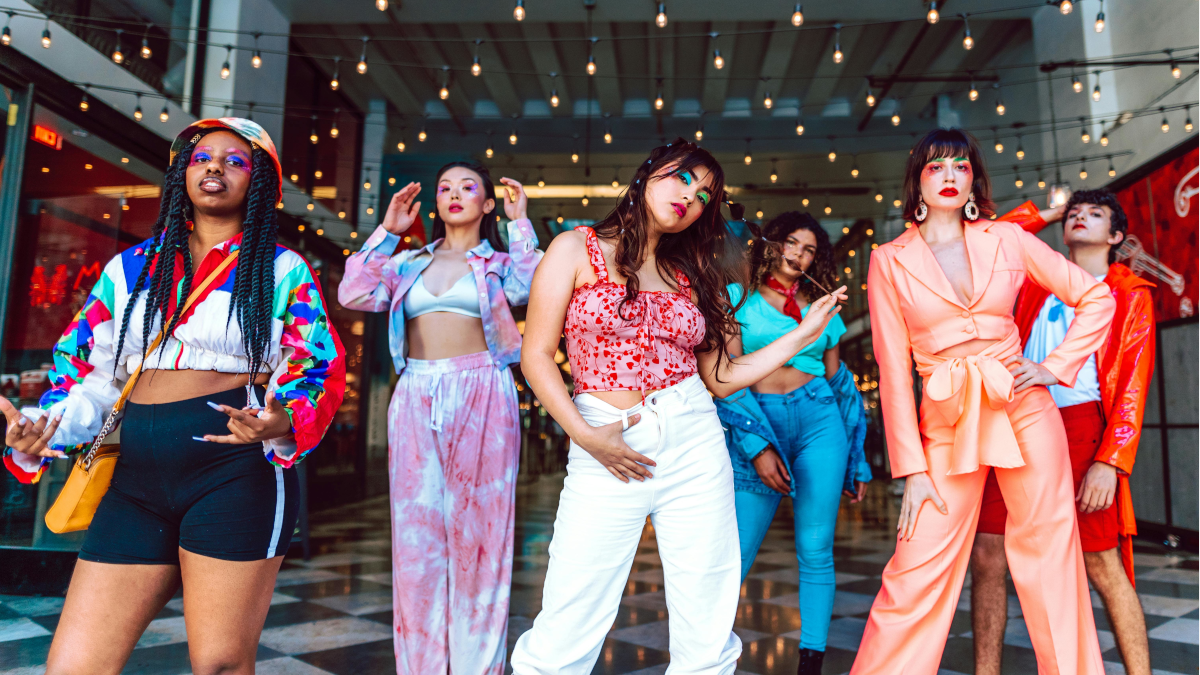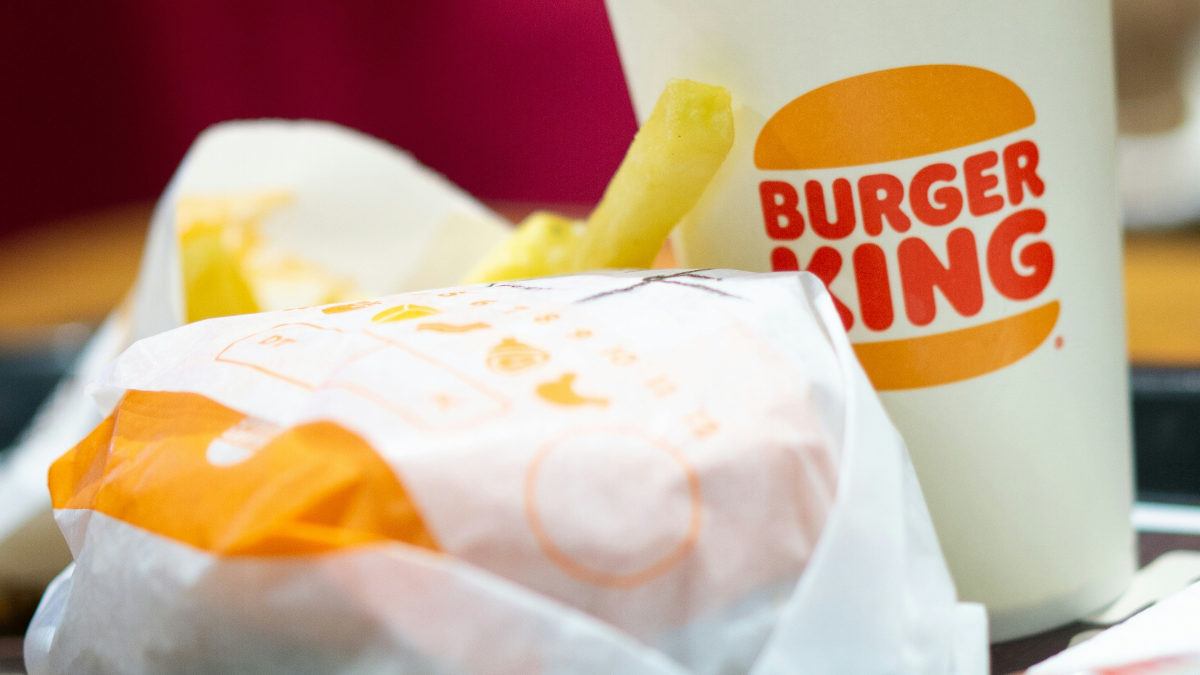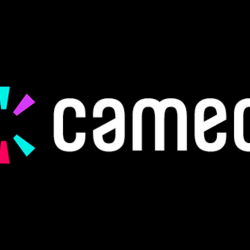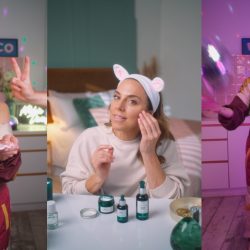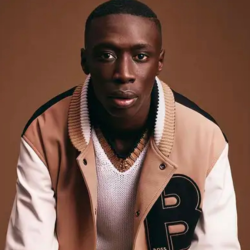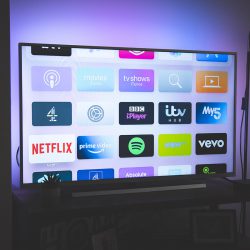In the halcyon days of dial-up internet and Top of the Pops (1964-2006), the artists of the nineties existed in a realm that verged on mythical. It was an era of eclectic, dynamic contrast; the golden age of R&B, Grunge galvanising counterculture, Hip hop’s burgeoning main-streaming. At five years old, for me (and perhaps many of us) it was the pop stars who possessed the most potent allure. From Britney’s ubiquitous effervescence to the Spice Girls’ infectious girl power, these icons were galactic. Theirs was a far-off world, curated for our consumption and accessible only through grainy television screens and the glossy pages of magazines. We watched on with stars in our eyes, lip syncing into hairbrushes; ‘Tonight, Matthew, I’m going to be…’
Today, a viral TikTok can catapult an unknown artist to overnight stardom. The platform, boasting over a billion daily users, is an unparalleled marketplace for music discovery. Its unique blend of user-generated content and virality have democratised music production and distribution. Independent artists of all sizes can connect directly with audiences, bypassing the long-established bastions of major record labels. TikTok was instrumental in the careers of the latest contemporary stars like Central Cee, Lil Nas X, Tyla and Olivia Rodrigo, demonstrating a seismic shift in the music industry.
The relationship between TikTok and record labels is tenuous. Early last month, Universal Music Group pulled its entire catalogue from TikTok after disputes surrounding artist compensation. In an open letter, the label advocates for value — yet this decision contradicts the platform’s demonstrable track record to foster unprecedented discovery and career expansion for musicians. In this article, we’ll delve into specific examples of TikTok’s revitalising impact on the music landscape, and examine how UMG’s decision could damage the future of their artists.
Beyond listening
From leaning back to leaning in; today’s listeners engage actively in music consumption. This is reflected in TikTok’s 2023 Music Impact report, which shows its community is twice as likely to discover and share new music than the average social media user. In the US, 62% of TikTok listeners pay for a music streaming service, compared to only 43% of consumers overall. Engagement also drives real-world support, with TikTok fans more likely to attend live events and purchase merchandise. In Germany, 58% spend more on music festivals, and those in Brazil spend twice as much on music gift cards. These statistics paint a clear picture of TikTok users as active participants in the music ecosystem, fostering discovery, connection, and financial backing for the artists they love.
Creating connections
Authenticity is the cornerstone to TikTok — real people, creating content to entertain and connect with one another. Duets allows users to respond with their own videos, from reviews to covers to dance trends. Many musicians are finding ingenuitive ways to collaborate with these audiences via this feature. Rapper and producer Russ posted an open verse challenge; upcoming artist @KtlynRaps’ duet soon went viral, prompting Russ to release an official remix together a month later that earned Ktlyn 23,000 new followers in a single day.
Charlie Puth’s most watched and engaged-with video centres a behind-the-scenes look into the creative process. When fans responded with sounds, Puth used them to create beats for his viewers. These interactions blur the line between consumption and contribution, suggesting a craving for symbiosis rather than the past’s distance between artist and listener.
Global sounds
TikTok’s ability to propel regional sounds onto the global stage is unparalleled. This is evident not only in the platform’s Music Impact Report, which shows user preferences for international music exceeding the average listener, but also in the rise of K-Pop. With its catchy hooks, synchronised dance routines, and aesthetically-driven music videos, K-Pop perfectly aligns with TikTok’s format and emphasis on virality.
When they joined the platform in 2019, BTS broke world records by gaining one million followers in just three hours and 31 minutes. To date, their account has garnered 1.3 billion likes. Similarly, Afrobeats and Reggaeton, like Nigerian artists Burna Boy and Wizkid, and Puerto Rico’s Bad Bunny and Mexico’s Kimberly Loaiza, thrive on TikTok thanks to their infectious rhythms and energetic dance trends, highlighting the platform’s power to showcase diverse music and connect audiences worldwide.
Micro-influencer marketing
TikTok’s booming user base has seen influencer marketing shift towards the power of the “micro.” Unlike mega-influencers, these creators (often with 1,000 – 100,000 followers) can deliver millions of video views at a fraction of the cost. Their ability to spark viral trends through song snippets, dance challenges and lip-sync videos have propelled both emerging artists and established labels to embrace them. On a larger scale, some creators have earned the title of taste makers.
In 2020, Miley Cyrus hosted Zoom listening parties with 15 creators, sharing the then-unreleased Midnight Sky and discussing ways the influencers could incorporate the song into trends. TikTok curators like @jarredjermaine, @kaseys.playlist and @arijelkins have amassed millions of followers for their music recommendations and analysis.
Audio expansion
TikTok’s musical ambitions continue to expand. In November, the platform launched their ‘Add to Music App’ feature, allowing users to seamlessly connect their TikTok discoveries with preferred streaming platforms. Last week, this feature was rolled out to over 160 additional countries, further blurring the lines between social media platform and music discovery tool. December saw TikTok’s first foray into live music, TikTok in the Mix, with a star-studded line-up including Cardi B, Offset and Renee Rapp performing to a sold-out crowd of 17,000 in Arizona, and attracting millions of viewers online. The event served as a celebration of their music industry partners, and showcased rising stars cultivated through their Elevate program. As TikTok transforms into a musical incubator for the next generation of artists, what does this mean for labels and the industry at large?
Did Universal Music Group f*ck up?
We’ve talked extensively about TikTok’s impact on the landscape, but UMG’s dominance over popular music can’t be overlooked either. The label is a titan of industry, and the decision to pull their music is a significant hit to the social media platform. Whilst this move removes top artists like Taylor Swift, Drake, Kendrick Lamar and Ariana Grande from TikTok’s libraries, the true impact is felt most acutely by the label’s lesser known artists. TikTok is the biggest marketing tool around and crucially, it’s free. UMG’s decision hinders the marketing reach of their artists with little to no budgets, and silences countless hours of prior, painstakingly built content creation. Whilst the platform is an undeniable cultural powerhouse, some argue that the relentless pursuit of that lightning-in-a-bottle moment has led to a homogenisation in sound. When the goal is to create an algorithmically agile hook — flexible enough to fit dance trends and lip syncs alike, with lyrics that possess little meaning — questions about artistic integrity and potential burnout abound. Halsey, Charlie XCX and Doja Cat, whose careers were all catapulted by the virality of goofy videos and Internet culture, have voiced their ennui as their labels push them and other artists to perform for online audiences and sacrifice artistry for the algorithm.
For now, the future remains nebulous. With 65% of all TikTok videos accompanied by music, perhaps the platform will be pushed to rethink their payout figure and re-negotiate a new deal with UMG. Will other major labels follow suit, seeking better royalties for their musicians? Or perhaps TikTok users will come to the rescue. Just days after UMG pulled their music, creators showcased their creative workarounds to muted videos, from Taylor Swift covers to royalty-free tracks in dance routines. Only time will tell who wins the tug-of-war, but one thing’s for sure; the music, and the relentless creativity of those who love it, will keep playing on.
Featured image: RDNE Stock Project / Pexels



